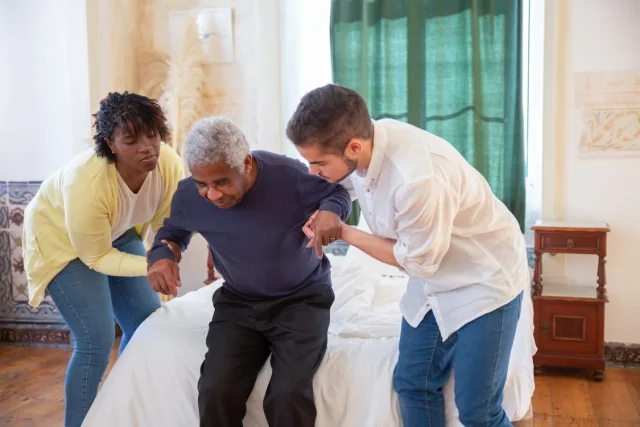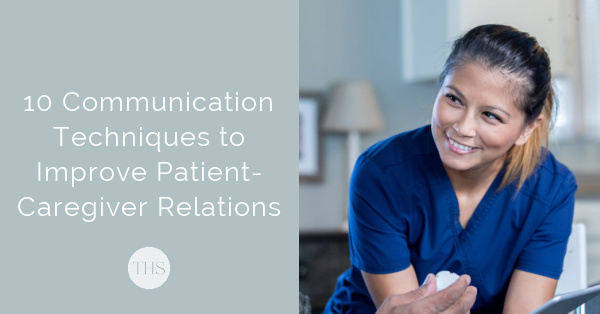7 Ways to Make New Friends When You’re Chronically Ill

The duties of a caregiver stretch beyond just looking after their sick family member or client; they also encourage the positivity and well-being of patients. How effective they are at carrying out these roles depends on their relationships with the patient.
Considering that a care setting can be stressful for both patients and caregivers, it’s easy for patients to grow thinner. Despite all these challenges, improving patient-caregiver relationships can promote the right environment for healing and care to take place.
When onboarding caregivers, it’s easy to be carried away by qualifications and experience. Whether you’re seeking the services of a professional caregiver or you’re a family caregiver, it’s vital to nurture a strong rapport with the care recipients.
When you establish good patient-caregiver relationships, it can significantly enhance the patient’s quality of care and life.
Here are effective communication methods that you can use to enhance patient-caregiver relationships, along with considering enrolling in caregiver training online to further improve your caregiving skills and understanding.
If you’re hiring a new caregiver, it’s going to take some time for the patient and the caregiver to get to know each other. Thankfully, professional caregivers receive training on how to best establish initial contact and good rapport with patients. Caregivers understand how it can be challenging to ask someone else for help with personal chores.
By allowing the caregiver and the patient some time, they can build a connection and become comfortable with each other.
The caregiver-patient relationship is built on a personal level and can entail difficult, confusing, and challenging scenarios. To ensure effective communication, the first step is to maintain transparency and ask for assistance. For the relationship to grow stronger, the patient needs to understand that they’re free to ask for help when they need it.
Equally, the caregiver should also learn to ask the patient for help in understanding a concern or a preference. Request for assistance is paramount to effective communication and forges the foundation for a strong caregiver-patient relationship.
Communication is the basis of a good caregiver-patient relationship. It helps in understanding the needs and expectations of the patient. It also helps in understanding the roles of caregivers to a patient. If you’re hiring a caregiver, set expectations by clearly communicating with the caregiver and avoiding misunderstandings that may arise. Encourage caregivers to respect the wishes of the patient. Where patients display stubbornness, caregivers shouldn’t force their way, but respectfully encourage behavioral change.
Every care recipient has a side of their story to tell, and learning to be an active listener is key to improving patient-caregiver relationships. By listening more and speaking less, caregivers can quickly build a strong bond and encourage the patient to share more. It’s also the best way to learn more about the patient.
During conversations, maintain direct eye contact while facing the speaker. Keep the conversation engaging by asking the right questions. Make the patient feel heard, understood, and respected.
Caregiving is about building closer relationships with care recipients. But this doesn’t warrant crossing boundaries when the patient demands privacy. As a caregiver, ensure you give the patient the feeling of being in charge of their well-being. Even without them requesting it, ask them if they’d like some privacy. It’s the simple stuff like this that encourages the patient to feel understood and open up.

Patience in caregiving is among the most important virtues for providing quality care. Some care recipients, especially those suffering traumatic brain injuries, may have challenges with memory and speech. Since such injuries often affect a person’s stimuli response, following rules, and risk-taking, injured patients may show less concern for regulations. They also act in a way that exposes them to danger without showing concern.
It’s therefore vital for caregivers to practice patience in such situations. Understand that the patient doesn’t have full control due to their state of mind. Allow them time to be calm and decide differently. To achieve this, you need to exercise positivity, empathy, and reasoning.
Caregiving is a shared responsibility between family members and caregivers. It therefore demands that the two parties coordinate to ensure the patient receives effective care. Consult the family members of the patient, especially when the level of care changes. It’s also crucial when transferring the patient between facilities.
By consulting family members, caregivers can understand the needs of the patient even better. It also helps in addressing challenges that arise during caregiving.
Care settings often include disabled or impaired people who may not be able to fully control their brain function. There may be patients who have difficulties with their speech, memory, and motor skills. Caring for a person with such challenges is often difficult and can easily cause frustration for both caregivers and patients.
Rather than letting frustration take center stage, caregivers and care recipients should exercise compassion. Being compassionate to yourself and those around you creates room for improving patient-caregiver relationships. Compassion softens the heart toward other people and allows honest communication to happen.
Even though caregivers can have a rather busy schedule, it pays a lot to create time to engage with the patient in things they love doing. Maybe they love reading, but poor vision makes it impossible. They could be into puzzles, board games, or scrapbooking. Whatever it is, make a sincere effort to help them enjoy this activity. Other than building a closer bond with the patient, these activities also lower distress and encourage them to maintain positive behavior, which is especially crucial when caring for a paralyzed person.
Caregivers are trained in the best ways to establish a good rapport with patients, which helps establish good patient-caregiver relationships. If you’re thinking about hiring a professional caregiver for your loved one, there’s a higher chance they already understand the basics of effectively communicating with care recipients.
However, if you’re the primary family caregiver, taking a caregiver training online course can also help you build a better relationship with the patient. Despite knowing the patient as your loved one, taking caregiver training helps you master strategies for effective communication.

Whether you’re a caregiver or are looking to hire one, establishing effective communication is essential for improving patient-caregiver relationships. In providing effective care, caregivers need to show compassion, kindness, respect, and patience. When you show the patient that you care and treat them with dignity, you build trust. Additionally, actively listening to their concerns and engaging in activities they love shows you are there to safeguard their interests.
If you’re the primary family caregiver, taking a caregiver training online course can also equip you with essential skills to effectively communicate with the patient. When you establish a common understanding, it becomes easier to strengthen the bond and allow you to provide high-quality care.
For more helpful advice, check out How to Maintain a Sense of Independence When You’re Sick and 10 Practical Self-Care Tips for Caregivers.